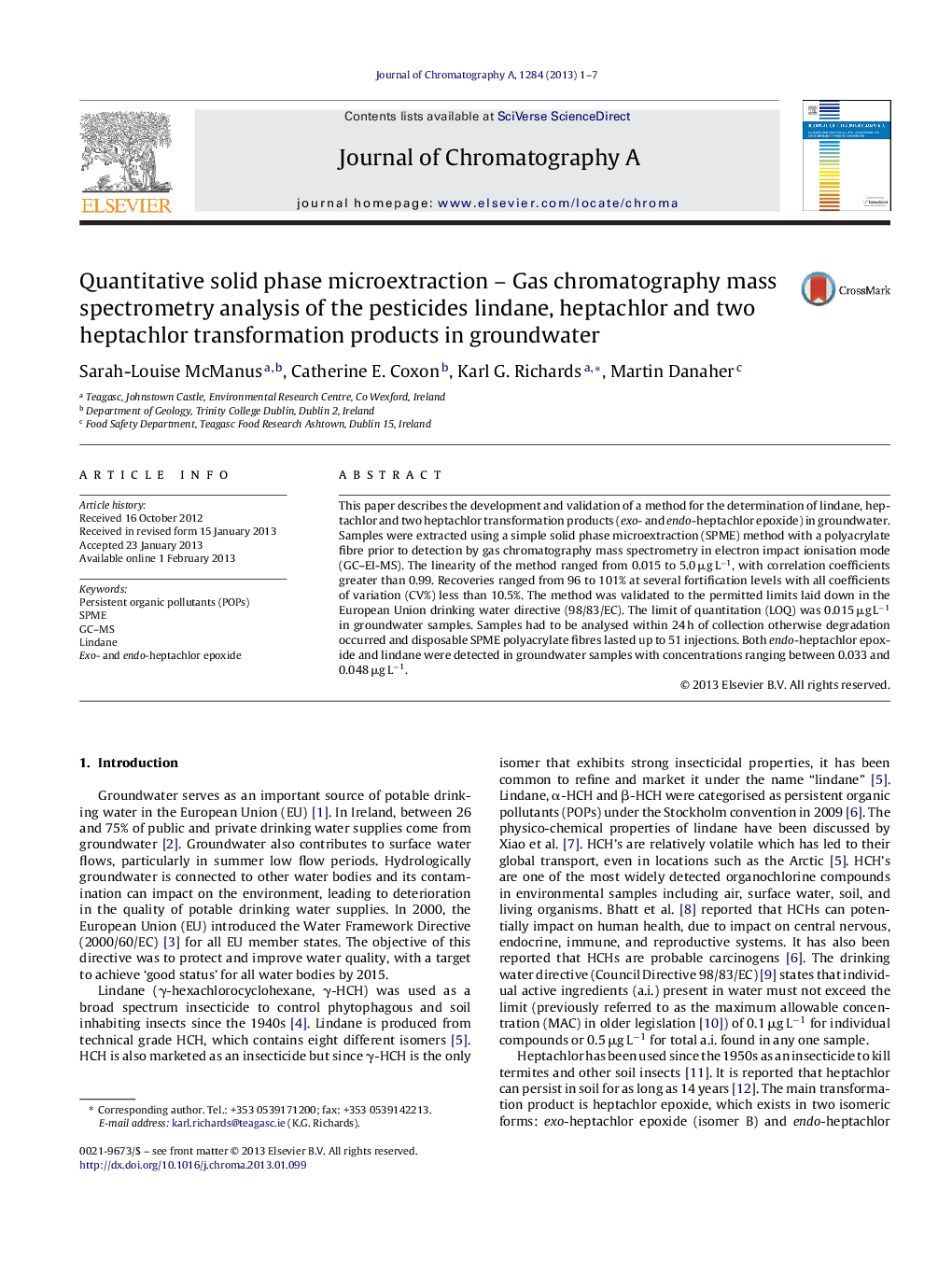| Article ID | Journal | Published Year | Pages | File Type |
|---|---|---|---|---|
| 1204283 | Journal of Chromatography A | 2013 | 7 Pages |
This paper describes the development and validation of a method for the determination of lindane, heptachlor and two heptachlor transformation products (exo- and endo-heptachlor epoxide) in groundwater. Samples were extracted using a simple solid phase microextraction (SPME) method with a polyacrylate fibre prior to detection by gas chromatography mass spectrometry in electron impact ionisation mode (GC–EI-MS). The linearity of the method ranged from 0.015 to 5.0 μg L−1, with correlation coefficients greater than 0.99. Recoveries ranged from 96 to 101% at several fortification levels with all coefficients of variation (CV%) less than 10.5%. The method was validated to the permitted limits laid down in the European Union drinking water directive (98/83/EC). The limit of quantitation (LOQ) was 0.015 μg L−1 in groundwater samples. Samples had to be analysed within 24 h of collection otherwise degradation occurred and disposable SPME polyacrylate fibres lasted up to 51 injections. Both endo-heptachlor epoxide and lindane were detected in groundwater samples with concentrations ranging between 0.033 and 0.048 μg L−1.
► Simple extraction method requiring little sample preparation. ► GC–MS-SIS differentiates between exo- and endo-heptachlor epoxide in groundwater. ► Recoveries ranged between 96 and 101% with coefficients of variation less than 10.5%. ► Limits of quantification were all less than European Union Drinking Water Standards. ► Method was successfully applied to real groundwater samples.
